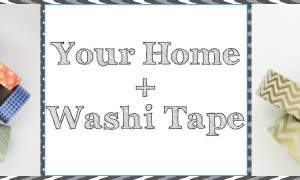Almost any self-respecting do-it-yourselfer has the skills to repair a hole in the wall. Even if you are a fairly recent devotee of weekend home improvements, the art can be acquired fairly quickly and painlessly. And while climate control isn’t the be-all and end-all factor for this type of project, it’s worth bearing in mind that the operative word when referring to climate in Las Vegas is dry.
Get Ready
If you plan to repair a hole in the wall bigger than a few inches, you will need the following materials:
- Drywall—Look for 2’x2′ sections at your local hardware or home-supply store. Most interior walls require 1/2″ thickness.
- Mesh (or paper) tape
- Setting compound (also called joint compound)—”All-Purpose” is the best choice, as explained on The Family Handyman website.
- Backer boards: A small piece of 1/4″ plywood will do nicely.
- 1-1/4″ drywall screws
- Drywall saw
- 6″ drywall knife
- 100-grit sandpaper
You will also need a drill/driver or screwdriver, a basic kitchen sponge, water, and a pail, bucket, or other small container in which to mix the joint compound.
Get Set
To repair a hole in the wall, first make a bigger hole! The object is to square the hole since cutting a circular or oddly shaped hole of drywall is difficult if not impossible. Once you have cut your perfect square, insert the backer board into the hole, behind the existing drywall. Secure the board with four screws, countersinking them just beneath the drywall surface.
Next, cut a piece of drywall with the saw, making sure it fits snugly into the wall opening. Cover the drywall with a square of mesh tape so that the tape overlaps all the edges of the drywall patch (one side of the tape is adhesive so it will stick to the wall). Fortunately for the Las Vegas handy person, the best installation temperature for drywall is at temperatures 55 degrees or higher, a condition prevailing around the Valley nearly the entire year.
Patch
You’re ready to mix your first batch of compound. Mix appropriate quantities of powder and water in a bucket or square pan as directed on the package, and stir until the mixture appears creamy and spreadable. Mixing and smoothing joint compound can be a tricky process in Las Vegas’s dry climate, which accelerates the setup time of wet-to-dry products. Use the drywall knife to apply a first coat over the drywall and mesh. It doesn’t have to be perfect, but try not to leave raised areas or ridges. Between coats, keep your joint compound covered so it doesn’t dry out prematurely.
Once the dry desert air helps the first coat to dry, you’re ready to apply the second coat. Focus on feathering out the edges a little more artfully on the second pass. The goal is to create a smooth, seamless transition between the repair site and the surrounding drywall. Your third and final coat should refine the patch even further.
When dry, use sandpaper to smooth and remove any imperfections. When the entire repair site feels smooth under your hand, you’re nearing the finish line. Lightly wipe over the sanded compound with a sponge to remove excess dust.
Prime and Paint
Apply a primer paint first. As with compounding earlier, primer and paint will also succumb to the accelerated drying effects of Las Vegas’s warm, dry conditions—so move quickly! Ideally, you will have saved some leftover paint from your home’s original paint job. If not, a color match from your local paint or home store should do the trick.
Image Source: Ken Dyck
[cf]skyword_tracking_tag[/cf]







[…] When dry, use sandpaper to smooth and remove any imperfections. When the entire repair site feels smooth under your hand, you’re nearing the finish …read more […]